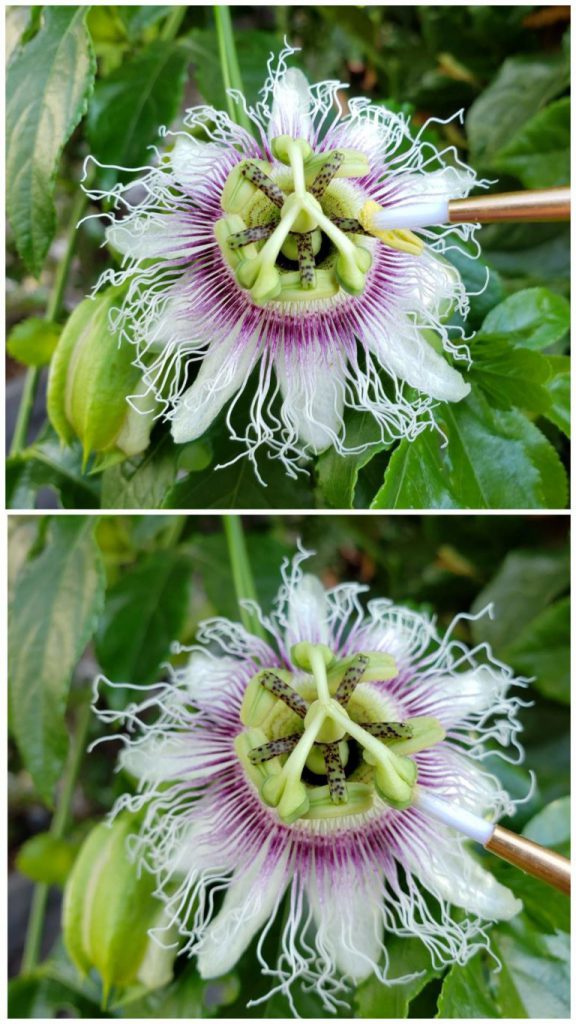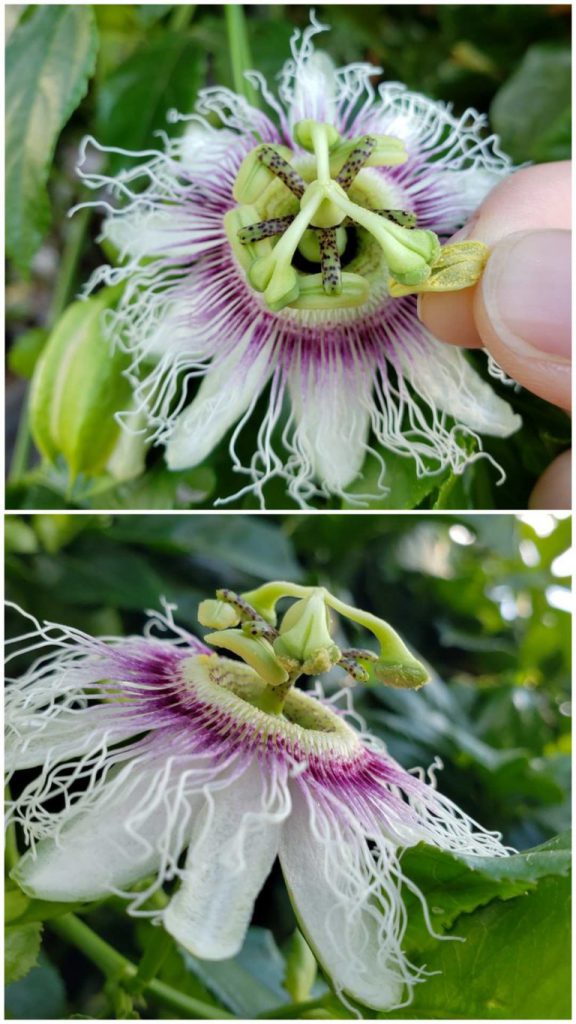I have been asked this question couple of times during last month. My clienteles say their vine are very healthy, produce a lot of flowers, but still there is no fruit. I know it is very frustrating.
The flowers of passionfruit are self-fertile due to the flower morphology, being structured so that the anthers are placed below the stigmas. Additionally, plants can be either self-compatible or self-incompatible depending on their variety. The purple passionfruit is mostly self-incompatible; however, some selected varieties and hybrids may show signs of partial self-incompatibility and should not be planted in large blocks of a single variety. On the other hand, the yellow passionfruit (Passiflora edulis Sims f. flavicarpa Degener) is almost entirely self-incompatible and requires cross-pollination with another cultivar to set seeds and fruit. In addition, the amount of pollen deposited on the stigma during pollination determines the number of seeds set and size of the fruit. A passionfruit can develop as many as 350 seeds and unless at least 100 ovules develop into seeds then the fruit is likely to be hollow, light in weight and have little juice.
The pollen is heavy and sticky; making wind pollination ineffective thus pollen transfer must occur via pollinating insects or manual hand pollination where populations of pollinating insects are insufficient. Wind is ineffective because of the heaviness and stickiness of the pollen. Honey bees and carpenter bees (Xylocopa sonorina) are the primary pollinators of passionfruit; when abundant the carpenter bee is a more efficient pollinator due to its foraging behavior and larger size. To assure the presence of carpenter bees, it is wise to have decaying logs among the vines to provide nesting places.
Hand pollination of passion fruit flower
The goal is to collect and transfer pollen from the anther to the stigma. You can use a dainty paint brush to collect the pollen from the anther and spread it on the stigmas. There are suggestions out there to do the same using a Q-tip, though I find the cottony texture sticks and holds on to more of the pollen than it actually deposits onto the stigma. You also can simply pluck off one of the anthers – or as I like to call them – “pollen pads”. Then rub it on all of the stigma bits to deposit pollen. Depending on how much pollen the anther pad has to offer, you should be able to “do” all three stigma bulbs on that flower – and likely have leftovers to spread to other passion flowers as well!
For more information please read the article about passionfruit in EDIS


 0
0

